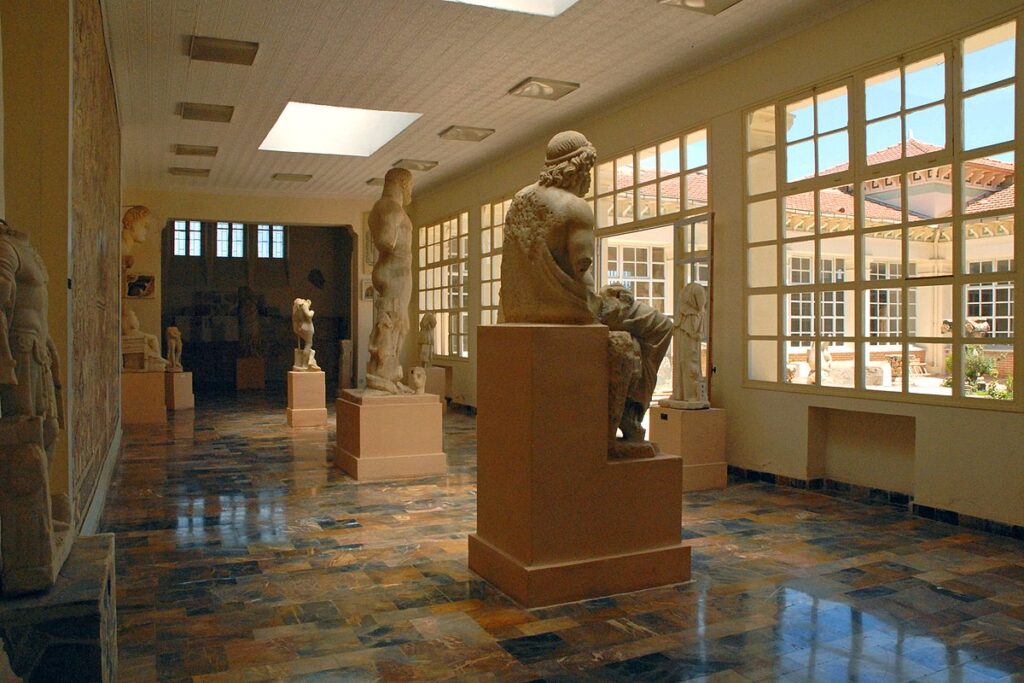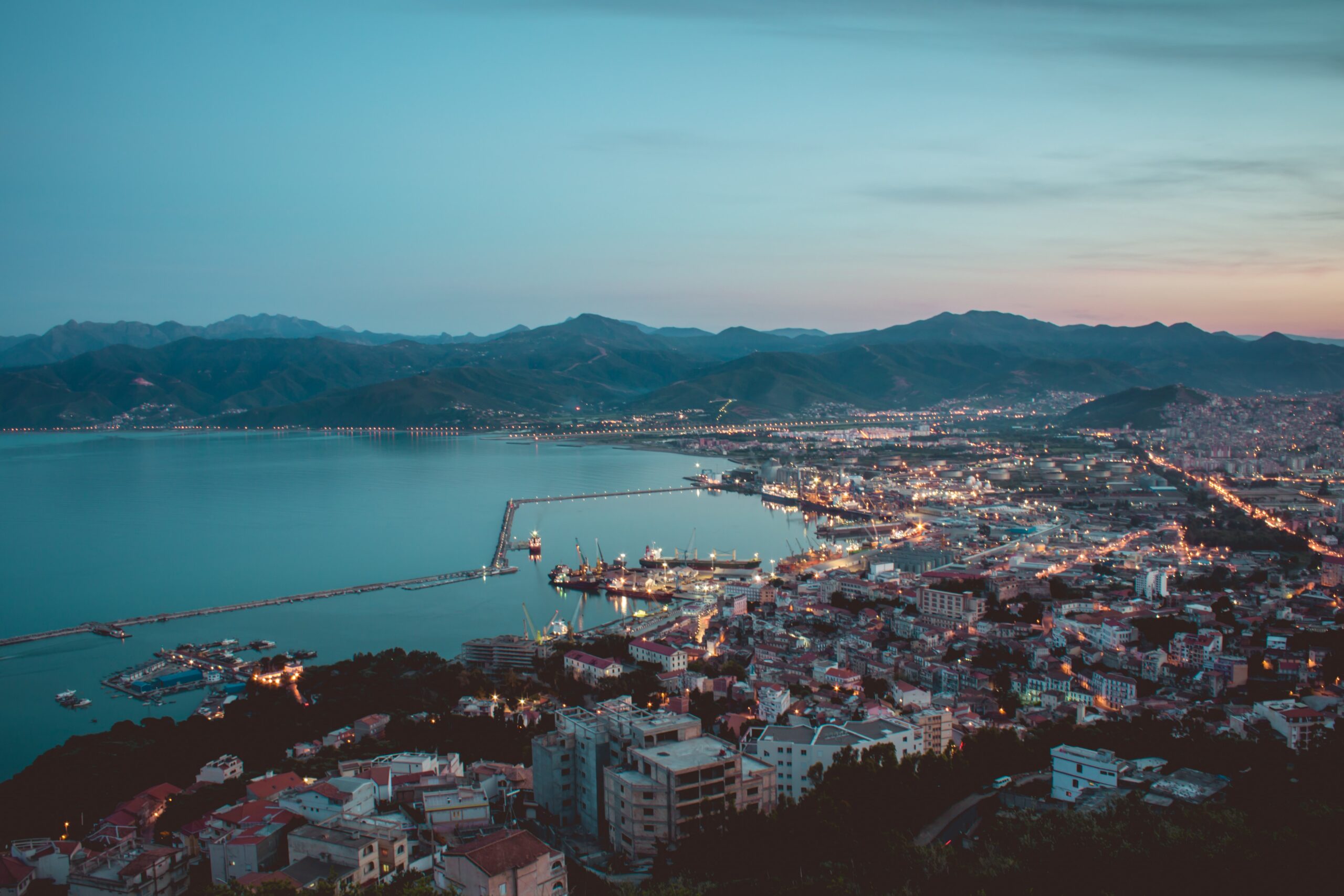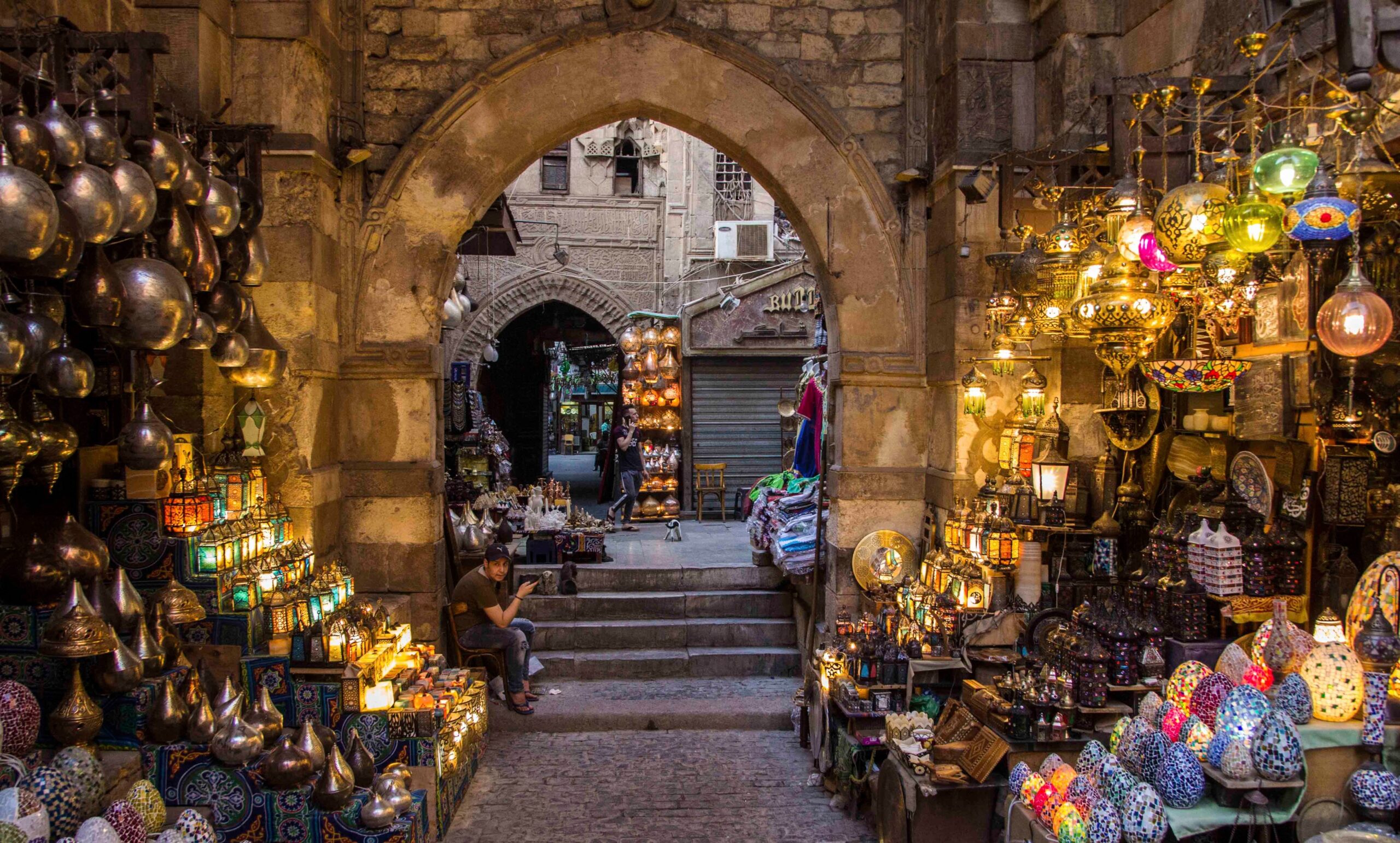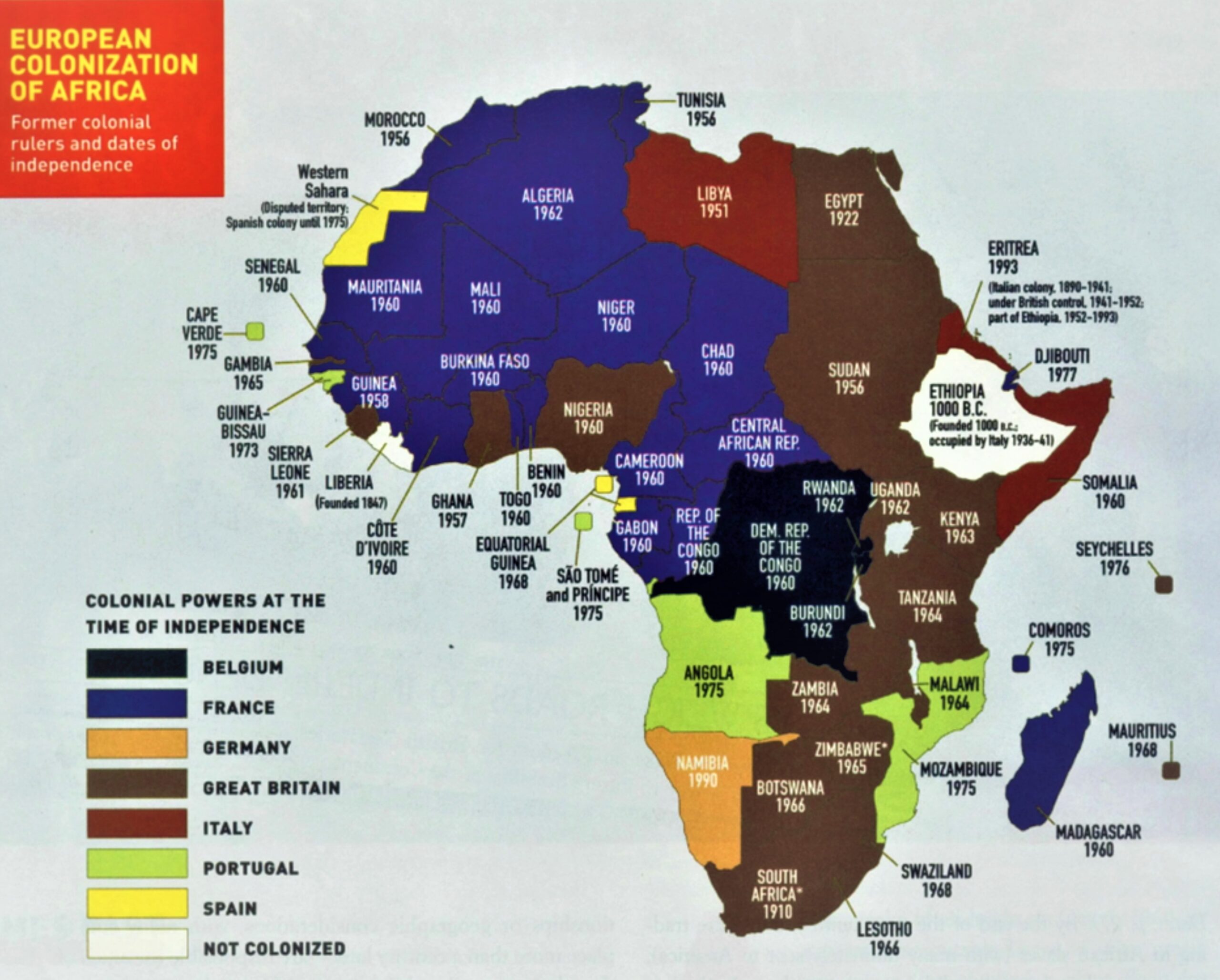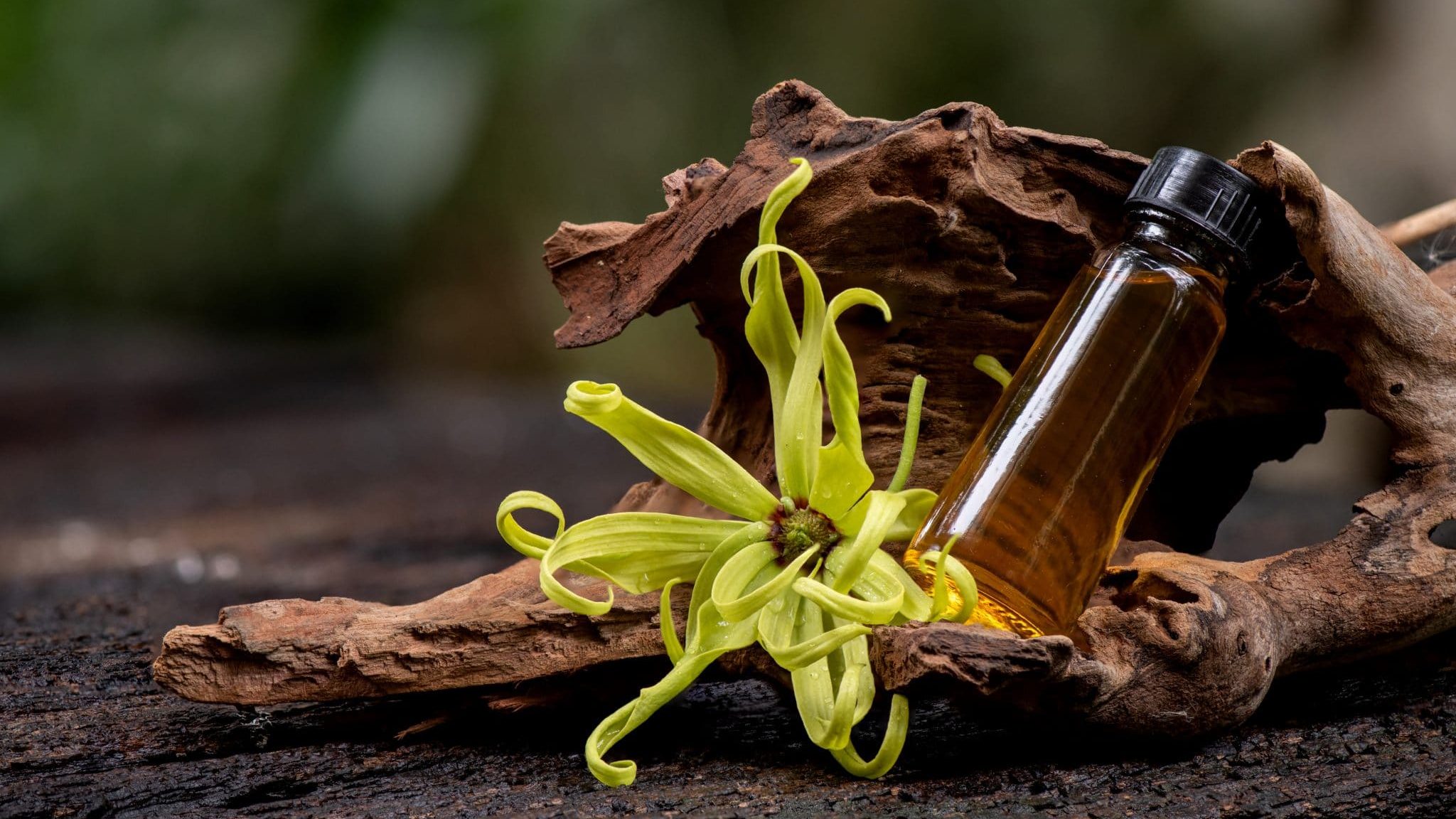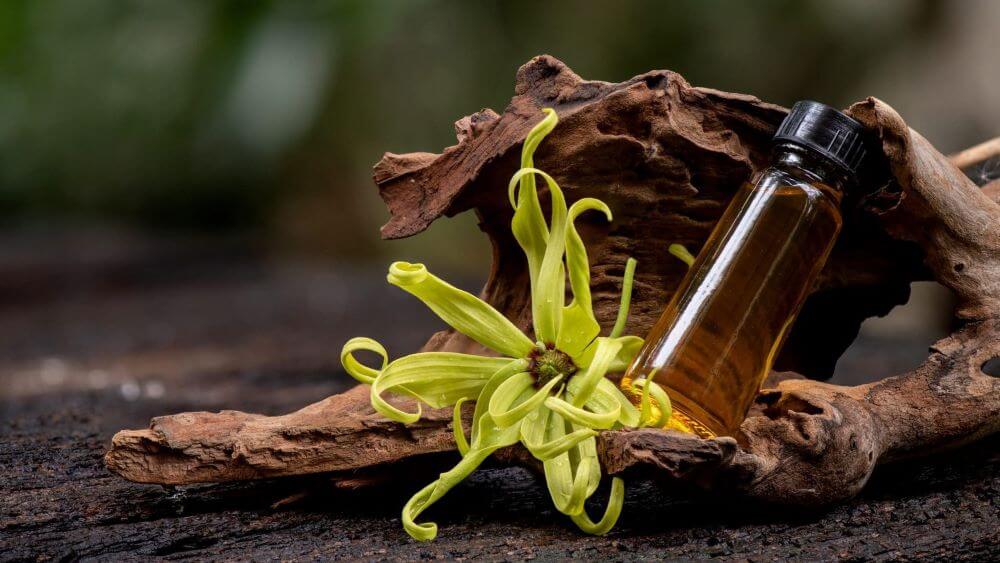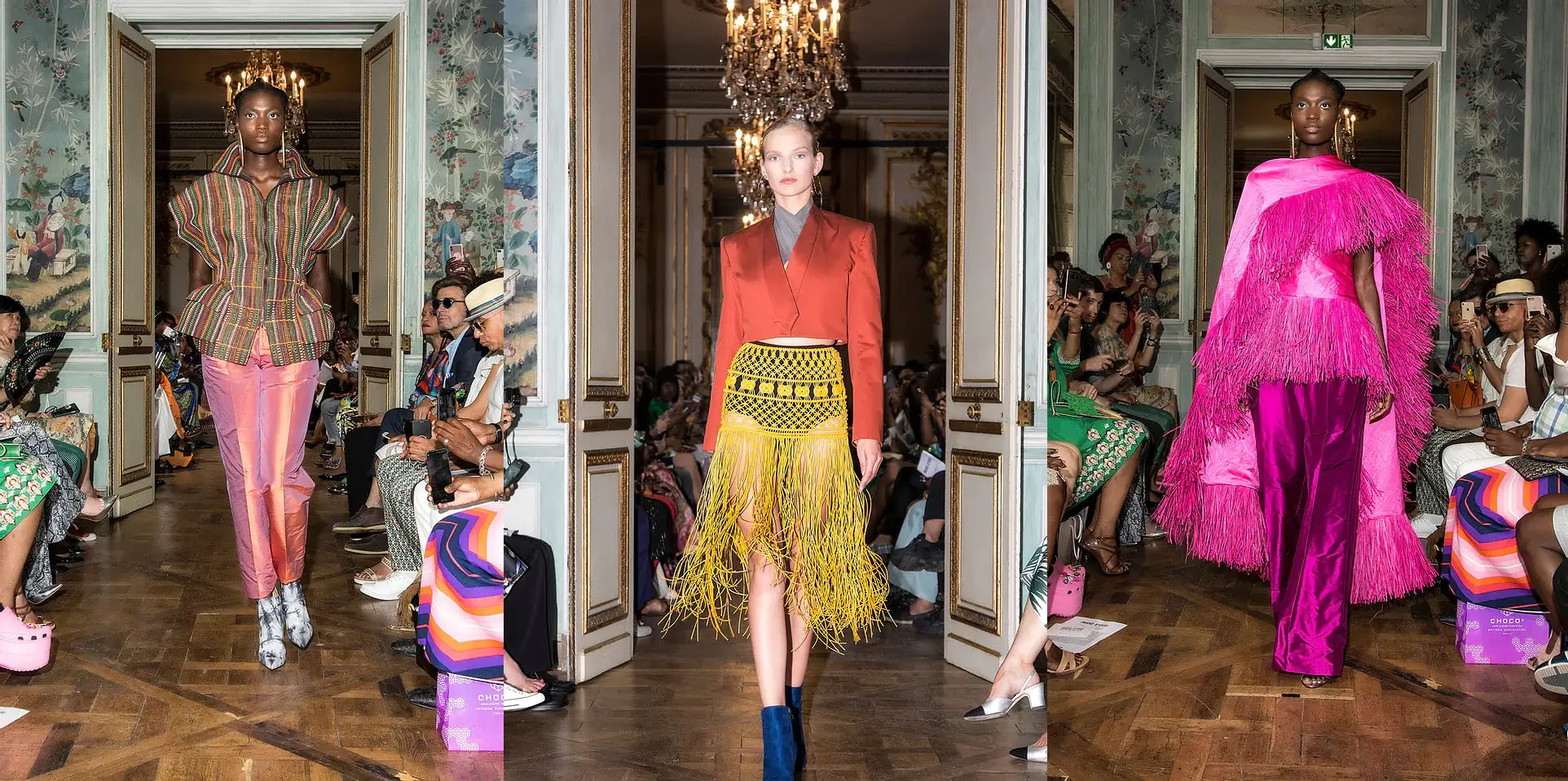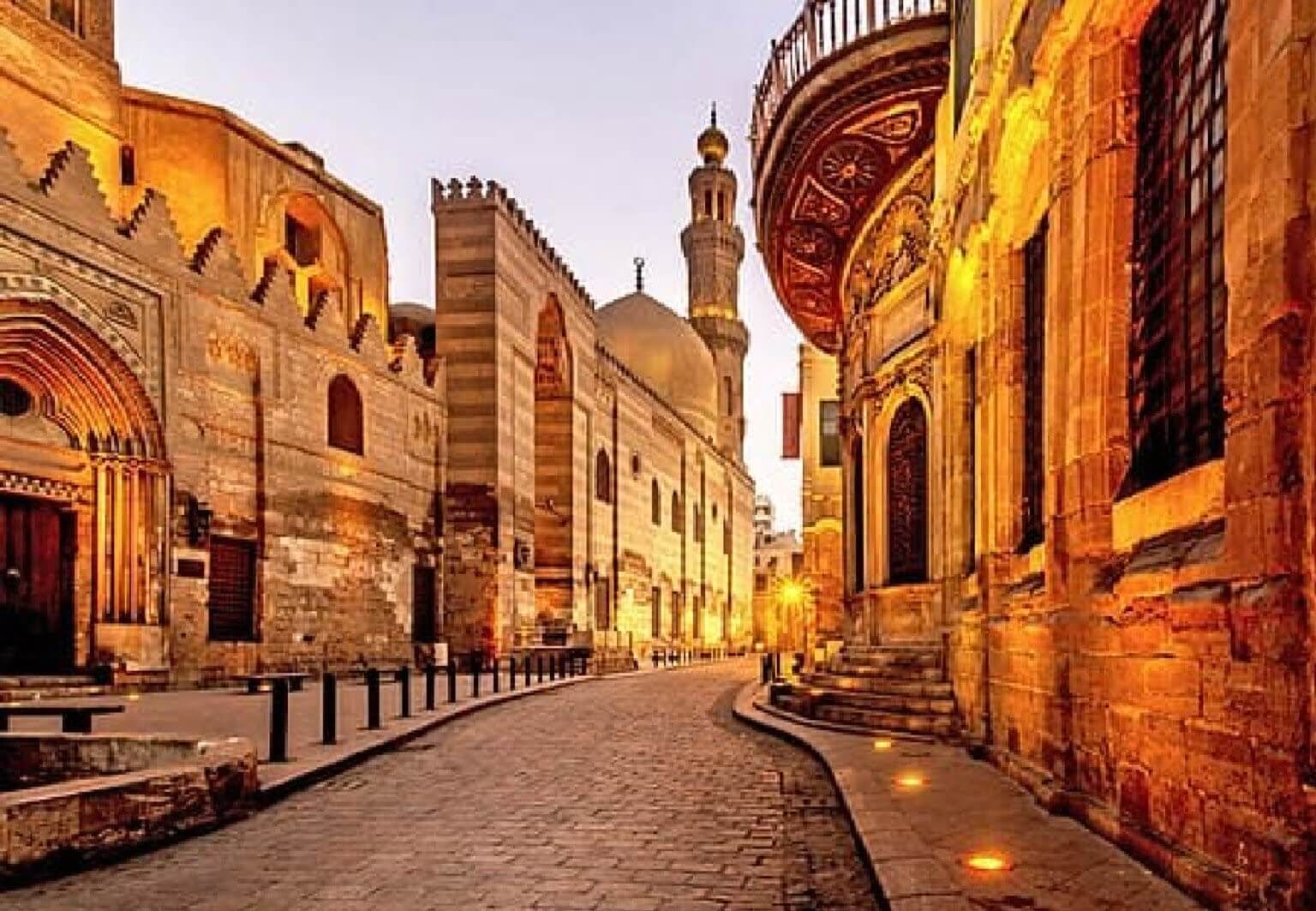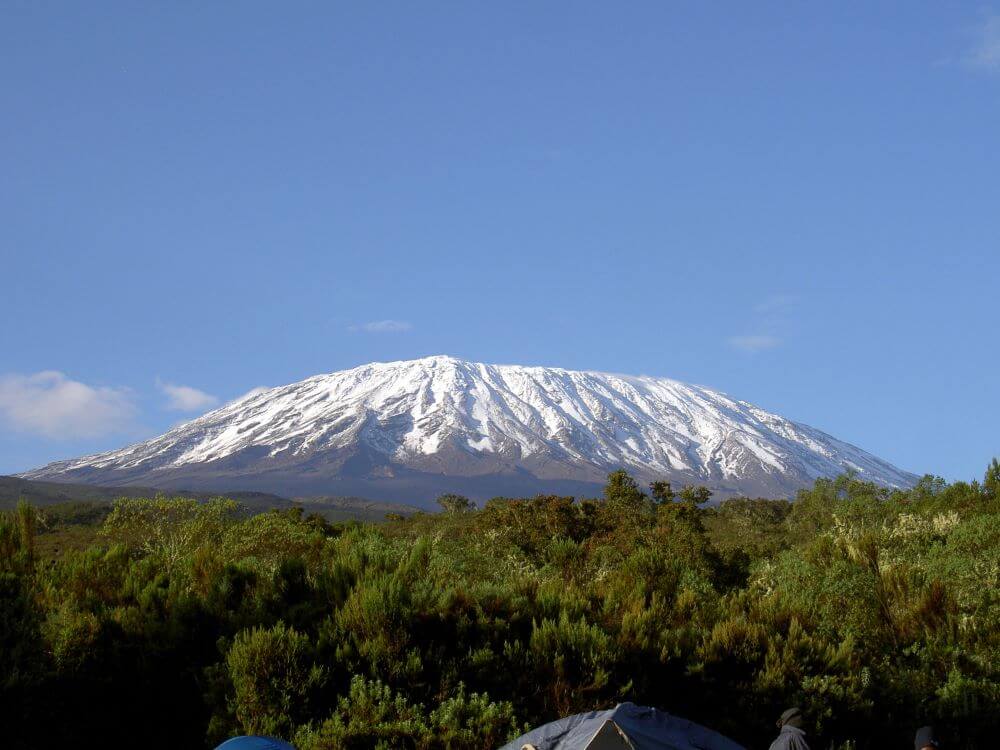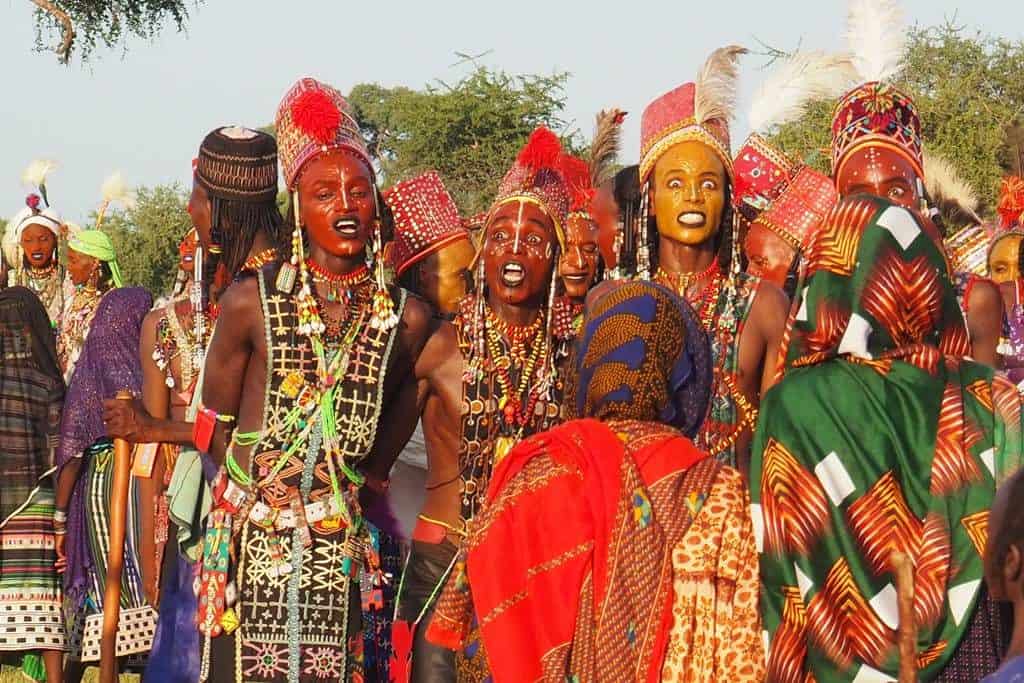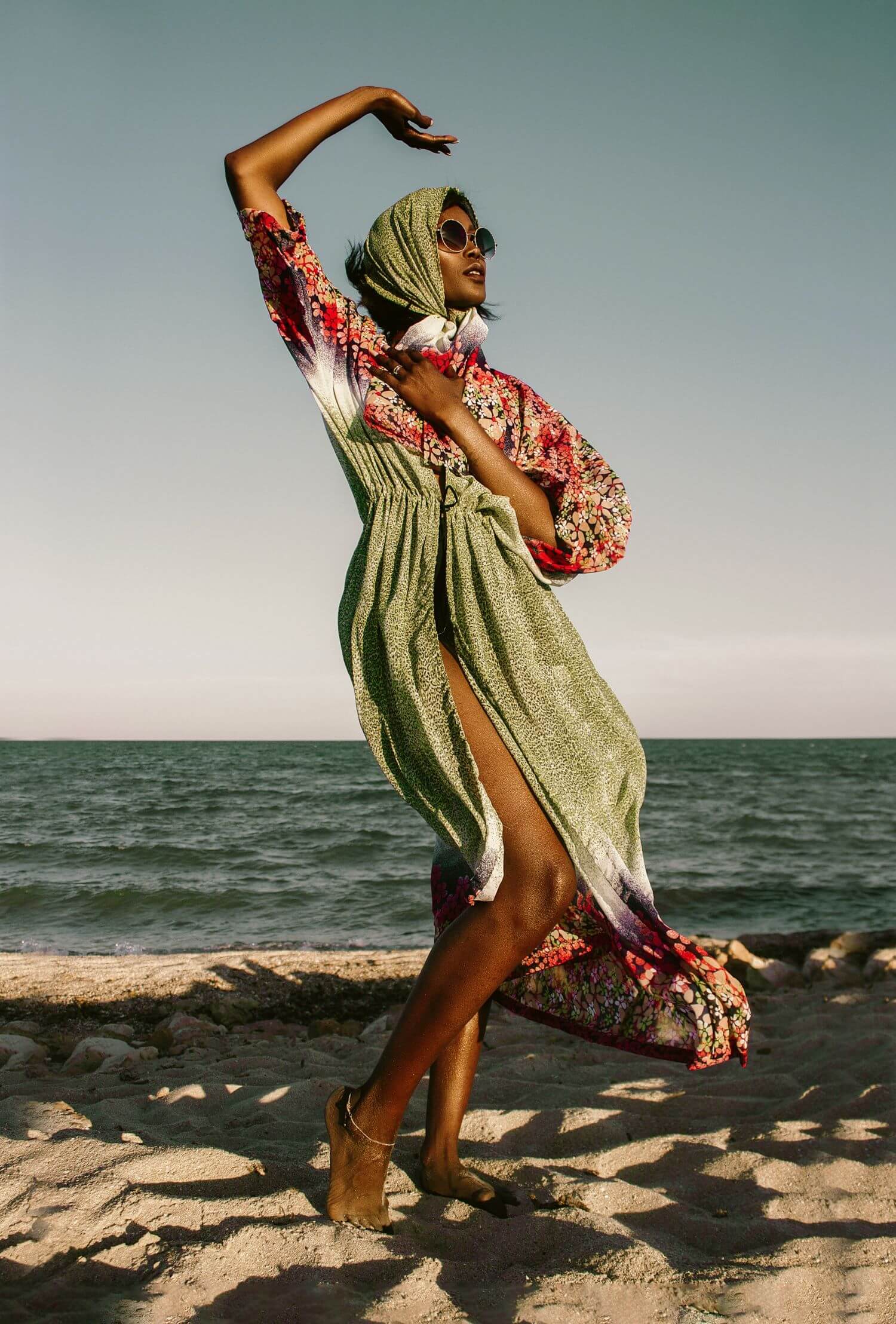Experience fine art at one of these top ten museums in Algeria.
The Ahmed Zabana National Museum in Oran is named after the Algerian national revolutionary hero Ahmed Zabana, who was executed by the French on May 19, 1956, in Algiers.
The first floor of the museum tells the story of the local impact of Algeria’s battle for independence from France, including a list of local people executed by the French between 1954 and 1962.
The museum also features artwork in the form of ancient sculptures, mosaics and terracotta portraits and paintings including works by 20th-century Algerian artists and French Orientalists like the painter and writer Eugene Fromentin. One of the earliest pictorial interpreters of Algeria, Fromentin, while quite young visited the land and people that suggested the subjects of most of his works and the Museum includes an exhibition of his memory and portfolio of North African life.
Photo: Statues in the Archaeological Museum of Cherchell, Algeria
The Archaeological Museum of Cherchell houses what are widely considered to be some of the best examples of Roman and Greek antiquities on the African continent. Cherchell was called Caesarea of Mauretania during the days of the Roman empire. Many artifacts from various periods of Cherchell’s history have been uncovered by archaeologists, a large number of which are on display in the Cherchell Archaeological Museum. Exhibits include works by Byzantine silversmiths, such as ornately decorated vessels used for drinking, as well as intricately designed mosaics. It was during the Roman reign over Mauritania in 25 BC, under the leadership of Juba II, that a theater, library and other buildings
were established in Cherchell.
The first floor of the museum tells the story of the local impact of Algeria’s battle for independence from France, including a list of local people executed by the French between 1954 and 1962.
The museum also features artwork in the form of ancient sculptures, mosaics and terracotta portraits and paintings including works by 20th-century Algerian artists and French Orientalists like the painter and writer Eugene Fromentin. One of the earliest pictorial interpreters of Algeria, Fromentin, while quite young visited the land and people that suggested the subjects of most of his works and the Museum includes an exhibition of his memory and portfolio of North African life.
Juba II also gathered an impressive collection of artworks, particularly marble sculptures, some of which have landed up in museums in other
parts of the world, but excellent examples are to be found in Cherchell Museum, along with a sculpture of the head of Juba II wife, Cleopatra
Selene II. Partial ruins of the Roman theater, Roman baths, and Civile Basilica are found on the outskirts of Cherchell.
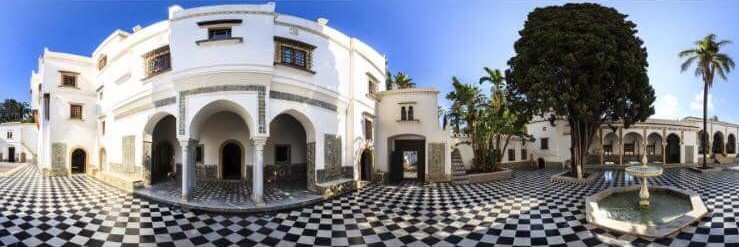
Bardo National Museum of Prehistory and Ethnography is a national African Art museum located in Algiers, Algeria. The edifice is a former Moorish villa. It was opened as a museum in 1927. Nothing specific is known about this residence, formerly in the countryside and now encompassed in the modern city. H. Klein tells us that the palace was built in the eighteenth century and that it would have been the property of Prince Omar before the French conquest. A document, in the form of a drawing signed by Captain Longuemare, specifies that it
was Mustapha ben Omar who was a very rich Tunisian. In 1926, the Bardo Palace was ceded to the Domains by Mrs Frémont, sister and heiress of Pierre Joret.
A partnership with the Louvre museum was concluded between 2009 and 2014 for restoration and the presentation of the Roman sculptures collection of the Bardo museum. This agreement also provides for the exchange of exhibitions between the two institutions.
Exhibitions entitled “Memory à la carte” and “Amber Magic” were presented to the public on the occasion of the commemoration of the 120th anniversary of the Bardo national museum in May 2008. Collections of the national Bardo museum of African art travelled to Karlsruhe (Germany) within the following exhibitions: “Hannibal ad portas” in 2004, “About Sejnane, a country of a millenary tradition”in 2005, and “About the Vandal heirs of the Empire” in 2009. The collections were also exposed in Los Angeles within the exhibition”Stories in Stone, conserving mosaics of Roman Africa” in 2006 and in the Arab World Institute in Paris within the exhibitions entitled “The Phoenicians and the Mediterranean” in 2007 and “Lights from Kairouan” in 2009.
Beni Abbes Museum

Beni Abbes Museum is located in the oasis town of Beni Abbes, Béchar Province, Algeria. It is “a resource dedicated to desert fauna, fossils and Algerian arts and crafts.”
The popular museum supported by the Saharan Research Center houses displays of desert fauna, fossils and traditional arts and crafts, such as carpets, wall hangings, ceramic items, woodcarvings and jewelry. The museum displays an extensive range of different types of dates, one of the mainstay crops of oasis towns and villages in Algeria.
Maqam Echahid
At 302 feet tall, with three stylized fins joined at mid-height to shelter an eternal flame, The Maqam Echahid (Martyrs’ Memorial) memorializes Algeria’s struggle for independence from France. The monument opened in 1982, on the 20th anniversary of Algeria’s independence and is perfectly positioned overlooking the neighborhood of Hamma and nearly 200 years old beautiful Botanical Garden Hamma in the north. It is fashioned in the shape of three standing palm leaves, with the edge of each leaf featuring a statue of a soldier representing a stage of Algeria’s struggles.
The Martyrs Memorial is located on the heights of Algiers, in the municipality of El Madania, west of the Bois des arcades, east of Diar el Mahçoul and north of the plaza shopping center Riadh El Feth. It The monument has been erected on the site of an ancient military fort.

The massive structure wast built by the Canadian company Lavalin on a model produced in the Fine Art Institute of Algiers, under the leadership of Bashir Yelles. An Islamic style turret with a diameter of 33 ft and a height of 25 ft, topped by a dome of 20 ft is built atop the three fins. It rests on an esplanade that burns an “eternal flame” and includes a crypt, an amphitheater and the National Museum of El Mujahid (underground).
Museum of Antiquities (Algiers)

Photo: “This photochrome print of the Musée National des Antiquités Algériennes in Algiers is part of
“Views of People and Sites in Algeria” from the catalog of the Detroit Publishing Company (1905). The
museum, which opened in 1897, was described in the 1911 edition of Baedeker’s The Mediterranean,
seaports and sea routes: Handbook for Travellers as containing “the finest collection of the kind in
Algeria.” The print depicts the museum’s entrance hall, holding part of the collection of ancient columns
and sculpture. The hall shows the fine decorative architectural details of the building. According to
Baedeker’s, in the courtyard were 17th-century and later landscapes of Algiers and other parts of Algeria,
along with “modern views of Algiers and Arabic, Jewish, and Turkish inscriptions. In the centre is a
Roman mosaic from Sila, representing Scylla and marine deities.””
The National Museum of Antiquities and Islamic Art (Musée National des Antiquités & des Arts Islamiques in French) in Algiers, Algeria, according to Museum with No Frontiers is the oldest museum in Algeria and Africa. The collection was set up in 1835 by Bertrand Clauzel and curated by Louis-Adrien Berbrugger. The early museum opened in 1838 with antiquities of Algerian provenance. Up until 1896, the museum had been moved to several different locations, until it settled on the Mustapha Pasha hills and was officially inaugurated there in 1897.
In 1911, it was described as having “the finest collection of the kind in Algeria.” The museum holds objects related to Algeria and Rome. It covers the history of art in Algeria for 2,500 years. the museum has two sections, a section of classical antiquity whose collection dates back to 1835 and includes sculptures, mosaics and bronzes discovered on the archaeological sites of Algeria, a section of art of the Muslim west ( Algeria , Morocco , Tunisia , Spain ) and the Middle East, which was added to the initial fund in 1846 and consisted mainly of manuscripts, a collection of coins, carpets and embroidery, ceramics and woodwork.
Former student of the school of Charters and secretary of Marshal Clauzel , Adrien Berbrugger had thought from the beginning of the conquest to organize a library and a museum: the first was founded in February 1835, and the collections of antiquities were collected in the Janissaires barracks, rue Bab Azoun, in 1838. In 1845, the African Art museum occupied a dozen rooms of the Djanina Palace, and in 1848, the Library and the Museum were installed in a beautiful Moorish house, rue des Lotophages, demolished in 1862. In 1863, the pieces of the museum were preserved, with the first National Library of Algeria at the palace of Mustapha Pasha, in the Casbah . In 1896, the African Art museum moved to the upper part of Galland Park in a structure previously occupied by the first teacher training college. In 1897, the museum was inaugurated by Félix Faure. In 2004, the collection of Islamic art was transferred to a Moorish house next to the main building. On March 9, 2019, the museum was looted during protests against the 5th term of President Bouteflika.
The Museum of Modern Art of Algiers

The Museum of Modern Art of Algiers (MaMa) is an African art museum in Algiers. It was inaugurated in 2007. The building, built between 1901 and 1909, was first used as a department store, the Galeries de France. Its architecture is neo-moorish. It was rehabilitated to host the museum on five levels. The MaMa was opened at the occasion of the operation “Algiers, capital of the Arabic culture 2007”. It was supported by the Ministry of Culture, Khalida Toumi. The Museum of Modern Art of Algiers (MaMa) is responsible for the following missions: to conserve, restore, study and enrich collections and / or objects constituting collections; maintain the inventory of objects constituting collections and produce catalogs of objects and collections; ensure the protection of the collections and / or objects constituting the collections; make collections and / or objects constituting collections accessible to the public; create information and communication spaces,
educational workshops and meeting spaces; organize and participate in seminars and training and development courses; carry out animation programs such as conferences, exhibitions, and disseminate information related to their purpose; maintain relations of exchange and cooperation with similar institutions; initiate actions and research activities related to its purpose.
In addition, the National Museum of Modern and Contemporary African Art in Algiers is responsible for the collection of modern and contemporary works of art such as the visual arts, graphic arts, photography, video-art, new media, industrial design, design, since 1905 and highlight the works of modern Algerian art since 1945.
Address: Number 25, Larbi Ben M’hidi (formerly rue d’Isly).
The National Mujahid Museum

The National Mujahid Museum, which sits directly beneath the Monument of Martyrs (Makam el Chahid) in the commune of El Madania in the wilaya of Algiers, aims to collect, preserve and display objects and memories of the struggle against colonialism. It starts with the story of the French invasion of 1830, but focuses on the struggle from the uprising in Sétif, Constantine and Guelma in 1944 to Independence Day in July 1962.
Algiers’ National Museum of the Moudjahid is an open book on the history of the Resistance and the Algerian Revolution for freedom and dignity, offering visitors a global and detailed overview of the key stages of the armed struggle of Algerians, in particular the offensive of Nord-Constantinois and the Congress of Soummam.
Discover the large exhibition spaces dedicated to the popular Resistance (1830-1919), the colonial policy, the National Movement (1919-1954) and the Glorious War of Liberation (1954-1962), with descriptive plaques, objects, photos, canvases displayed according to a well studied scenography.
Once the visitors get inside the Museum, they will discover the light and heavy weapons used at the time, as well as the wireless communication devices, which demonstrate “the technical and military mastery acquired by the revolutionaries over the years of armed struggle, and their ability to obtain arms despite the siege imposed by colonial France by various criminal methods”.
The visit would end at the Dome of Contemplation, this Islamic architectural masterpiece, whose walls are decorated with golden Koranic verses, and in the middle of which is a luminous rock symbolizing the mountains of Algeria, placed on a sandy soil, reminiscent of the Algerian Sahara and its contribution to the recovery of national sovereignty. (APS)
The museum exhibits painted works as well as weapons, archival documents and war objects that belonged to the Algerian mujahideen who fought against French colonization from 1830 to 1962.
Exceptional pieces include a work painted, in 1853, by Ange Tissier of the Emir Abdelkader, weapons and objects that belonged to the Emir Abdelkader as well as the fan used by Dey Hussein with which the French consul was slapped in 1827.
Detailing, the National Museum of the Moudjahid is an open book on the history of Algeria, from 1830 to 1962, the date of recovery of national sovereignty.
For More Information:
Telephone: +213 021 66 92 08
Address: Riadh El Feth, El Madania, 16000, Algiers, Algeria.
Facebook page: https://www.facebook.com/pages/Musee-Nationale-Du- Algiers’
National Museum of Fine Arts of Algiers

The National Museum of Fine Arts in Algiers (french: Musée national des Beaux-Arts d’Alger) is one of the largest art museums in Africa. Opened to the public on May 5, 1930, it is located in the Hamma district, next to the Hamma test garden. On May 14th, 1962 over 300 works of art were brought to the Louvre in Paris from the Museum. This shipment included works by such artists as Monet, Delacroix and Courbet. The negotiations over returning the art, and whether it should indeed be returned to Algeria were a contentious issue in France and a cause of outrage in Algeria. Under the Evian accords of March 1962 it was agreed that all institutions and infrastructure which had under colonial administration been financed by the autonomous colonial administration in Algeria would remain under the control of the Algerian State. The argument of the Algerian negotiators for this technicality was that these institutions, museums included had been financed from the resources produced by the Algerian land and its people. Both the head of the Louvre and of the curator of the Museum of Fine Arts (who remained the same as under French administration) worked to bring the African owned Art works back under Algerian control.
The Director of France’s museums Henri Seyrig argued that returning the work, in accord with the Evian Agreements would continue to remind Algerians of their ties to France and would follow a foreign policy brief stating an intention to “foster the most extensive audience for our culture” as an extension of politics by other means. while the Minister of Foreign Affairs, Michel Debre saw it as France’s cultural property, and a part of its territory that must be returned. The Musée National des beaux-arts d’Alger came under threat as independence approached. As part of their campaign of destabilization, on 26th November 1961 Organisation Armée Secrète (OAS) commandos bombed a statue by Antoine Bourdelle in the courtyard of the African Art museum causing damage to the museum’s first floor as well as the statue. Additionally there was a fear among French cultural authorities that strict Islamists would take offense to nudes kept in the museum and/or that post-independence rioting and looting would affect the museum. French authorities saw the immediate danger posed by the OAS and apparent danger of anarchy (the African Art museum experienced a peaceful transition) as a reason to move the works of art in secret, under military escort first to Marseille and finally to the Louvre in Paris. The African Art Works works were valued at the time to be worth, in today’s dollars $50 million. However, despite close ties with the museum, no cultural representatives of the FLN, or indeed workers at the museum were informed of the transfer when it occurred and only discovered the missing pieces when they found empty frames. When the missing works were discovered the Fine Arts Museums director, Jean de Maisonseul informed the French. Negotiations began in May 1967 and by 1970, over the protests of France’s minister of foreign affairs, Michel Debre, the work was repatriated to Algeria. Cooperation between museum officials was one of the few examples of goodwill negotiating on both sides.
Address: 178, Place Dar Essalem – El Hamma – Belouizdad – Alger
Phone: +213 (0) 21-66-49-16
Website: www.musee-beauxarts.dz

